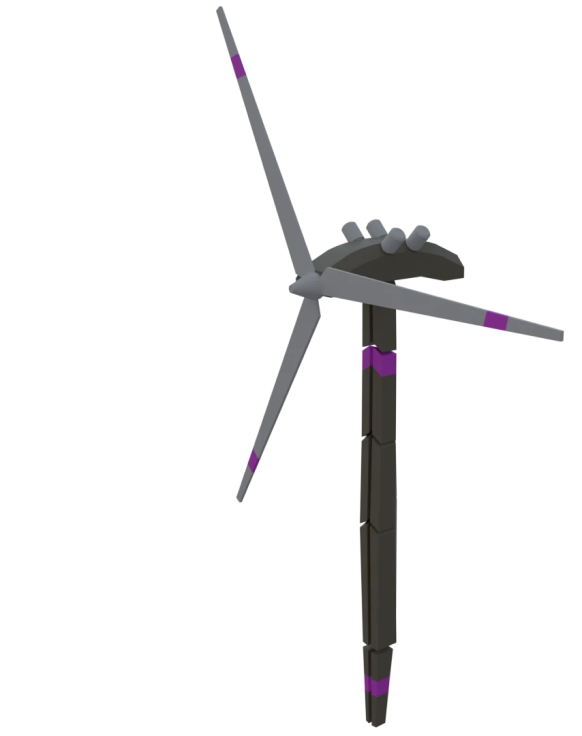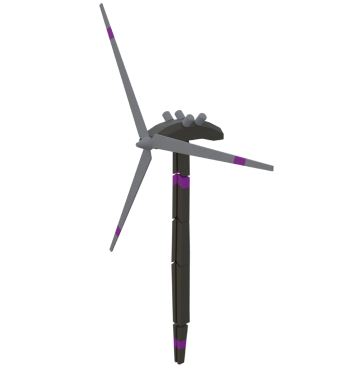How it works
Wind turbines generate electricity: Wind turbines convert kinetic energy from wind into mechanical energy, which is then converted into electrical energy. Powering mining rigs: This electricity can be used to power Bitcoin mining operations. Mining involves solving complex cryptographic puzzles, which requires a large amount of processing power. Reducing reliance on fossil fuels: By using wind energy, Bitcoin farms can significantly reduce their reliance on fossil fuel-based power, which is both costly and environmentally harmful.
Advantages of wind-powered Bitcoin mining
Environmentally friendly: Wind is a clean, renewable resource, so this type of Bitcoin mining produces far fewer greenhouse gas emissions compared to fossil fuel-powered mining. Cost efficiency: After the initial setup, wind power can offer lower long-term operational costs because wind is free, unlike coal or natural gas. Wind farms also benefit from government incentives for renewable energy use. Sustainability: As global pressure mounts to move toward greener energy, wind-powered Bitcoin mining aligns with the trend of decarbonization and sustainable practices.
Challenges
Intermittent energy supply: Wind energy is not always consistent, depending on weather patterns and geographic locations. This inconsistency can impact the stability of mining operations.
High upfront costs: Setting up wind turbines and the associated infrastructure requires a significant initial investment, though this can be offset by lower operational costs in the long term.
Location dependency: Wind farms need to be located in areas with sufficient wind speeds to make the energy generation efficient, which may not always align with ideal locations for mining operations (like places with low electricity costs or cool climates to aid in hardware cooling).


Why it's becoming popular
Global energy concerns: As Bitcoin mining consumes enormous amounts of energy, there is increasing scrutiny on its environmental impact. Wind-powered mining addresses some of these concerns by providing a renewable energy source. Carbon-neutral goals: Some cryptocurrency companies are committing to carbon-neutral goals, and wind energy is one way to achieve those targets. Incentives and regulations: Governments are offering tax breaks, grants, and other incentives for renewable energy projects, making it financially attractive to explore wind-powered mining solutions.
Examples of projects
Sustainable mining farms: Some Bitcoin farms are now being set up near wind farms to take advantage of the abundant renewable energy. For example, companies like Soluna and Layer1 are experimenting with wind and solar energy to run their mining operations. Hybrid models: Some mining operations use a combination of renewable energy sources, like wind and solar, to ensure a more reliable and continuous power supply.
Future of wind-powered Bitcoin mining
As the demand for Bitcoin and other cryptocurrencies continues to grow, so too does the push for greener and more sustainable mining practices. Wind-powered Bitcoin mining could play a significant role in reducing the environmental impact of blockchain technology.


